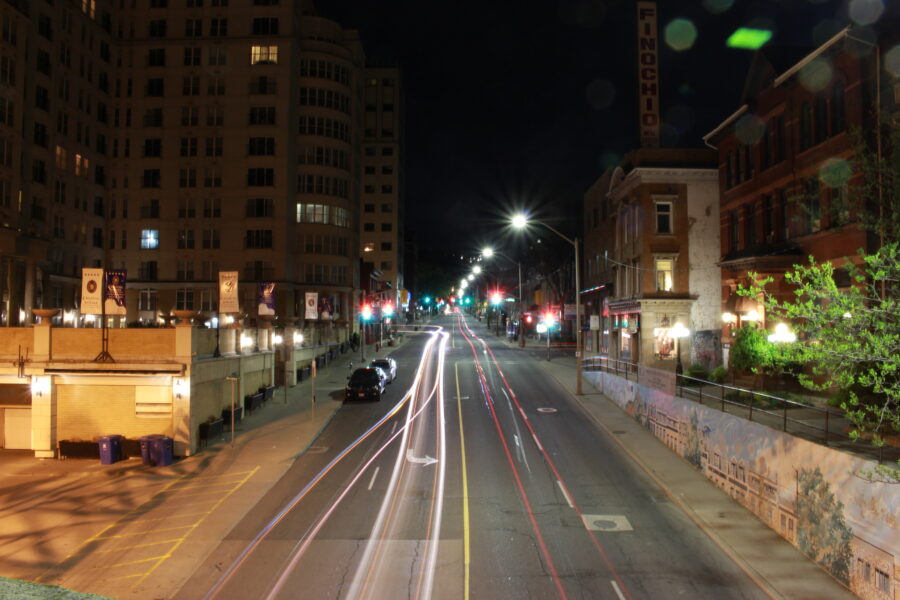
Gentrification in Hamilton
- Ryan Moran
- 04 Aug 2017
People don’t stand still, economies are never static, and no city is an island.
By Ryan Moran
Last weekend was great.
What made it great was, as a life long resident of Hamilton who typically feels as though he’s done and seen 90% of what’s to be done and seen, with lovely company I did and went to places I had never done or been to before.
On Friday night I had drinks at the new Capitol Bar on King East, by the beautiful Barnesdale Avenue. On Saturday, I had a late breakfast verging on early dinner at the Market, followed by a stop in to the awesome new Steeltown Garage on Barton and James, which itself was then followed by serendipitous stop in at the new Fairweather Brewery off Ewen Road in the west.
It was all an antidote to the grey rainy skies, and reminder of how excitingly our city is changing. Sadly, however, there are those in the city who would decry these sorts of new establishments as symbols of dreaded “gentrification.”
Bunk.
This year alone many businesses and establishments, both new and longstanding, have been vandalized or harassed with anti-gentrification sentiment. I wrote somewhere else recently that frustrating as that may be, it is far more disappointing for the lack of understanding and big picture thinking that it represents.
Hamilton was founded in 1845, it is now 172 years old. It was generally a prosperous city from the start and realistically did not have an image or identity “grittier” than any other midsized Canadian city. The biggest industrial boom time started in the mid 20th century, when it was already nearly a century old. Largely induced by the war era industrial need, Hamilton positioned itself as the blue-collar steel-city, at a time when that meant something far different, and by all metrics, far better than it does now. The biggest down turn, and essentially economic transition began to impact the city in the 70s and became pronounced across the 80s and 90s.
Why the sweeping, generalized history lesson? To illustrate that the identity most commonly associated with Hamilton really only exists for at best 82 years or 47% of its history, and the gritty, depressed identity for about 35 years or 20%.
We like to believe our current story, but we’re writing it out of our short-term memories.
So that begs the question, is what we’re seeing in Hamilton now gentrification, or normalization after a period, and sub-blip, in our city’s much longer economic history?
Complicated, and to be sure, it is both, but anti-gentrification sentiment leveled against small businesses opening in the city, particularly those being opened by people not originally from Hamilton, have much more to do with a misunderstanding of long-term normalization than they do with actual gentrification. What’s more, the logic behind such complaints finds much more common ground with Trump style wall and anti-newcomer rhetoric, than it does with real, valid criticisms of gentrification.

To be clear, gentrification is occurring, but it has very little to do with a restaurant that charges $20 for pancakes, espressos and LRT, nor are “people from Toronto” to blame. Though undoubtedly migration from down the highway is tied to what we’re experiencing, let’s not forget that it was migration to Toronto, from cities all across the country, including ours, that contributed to their situation to begin with. People don’t stand still, economies are never static, and no city is an island.
At its core, gentrification is about displacement of people, not microbreweries or coffee shops. Taking issue with the latter makes little sense and acting in anyway against them makes even less, it changes nothing, and just victimizes the owners.
Realistically, the streets of Hamilton already read like a story of nonstop population displacement for the entirety of the city’s history. Whether it’s the days when the steelworkers lived in the north and their management in the south, the English then Italian and Portuguese of the Jamesville area, or the post-war European immigration to northwest neighbourhoods (initially resisted by their anglo-protestant predecessors). All them, more or less, eventually resettling in one way or another to the Mountain, Binbrook, Ancaster, or Stoney Creek.
So what’s happening now is, to a very real extent, no different from what’s already happened over and over, the difference is the speed, direction, and cost. Speed in that it’s happening in what feels like overnight, the direction in that it is signalling a return to the lower city core, rather than the evacuation of it over the last 30 years, and cost in that it is pricing out those who did come to settle there in that time. And ironically, those being priced out, and choosing to stay in Hamilton’s limits are finding residence in affordable Mountain and Stoney Creek communities.
And it’s in this trend that those decrying a cupcake shop as gentrification are not simply mislead, they’re no where to be found. Instead of complaining on social media, or spray painting an independent business, how about helping to propose solutions? To push political representatives for market regulations, to push for mixed-income and social housing developments, to support large scale transit investments so that people can work and move across the city, and to support the development of small businesses, shops, and restaurants so that people can both earn and enjoy a high standard of living in their own community.
Instead of seeing, and misguidedly taking issue with some trees, how about collectively working to make the forest better?
It was a great weekend, I’m excited by the new places I experienced, and can’t wait to have more weekends like that in the years to come. Gentrification, aside from being a buzzy, “boogey-man” word, is less a force than it is a phone call that we have over a long period of time, the conversation is up to us.
Comments 0
There are no comments


Add comment